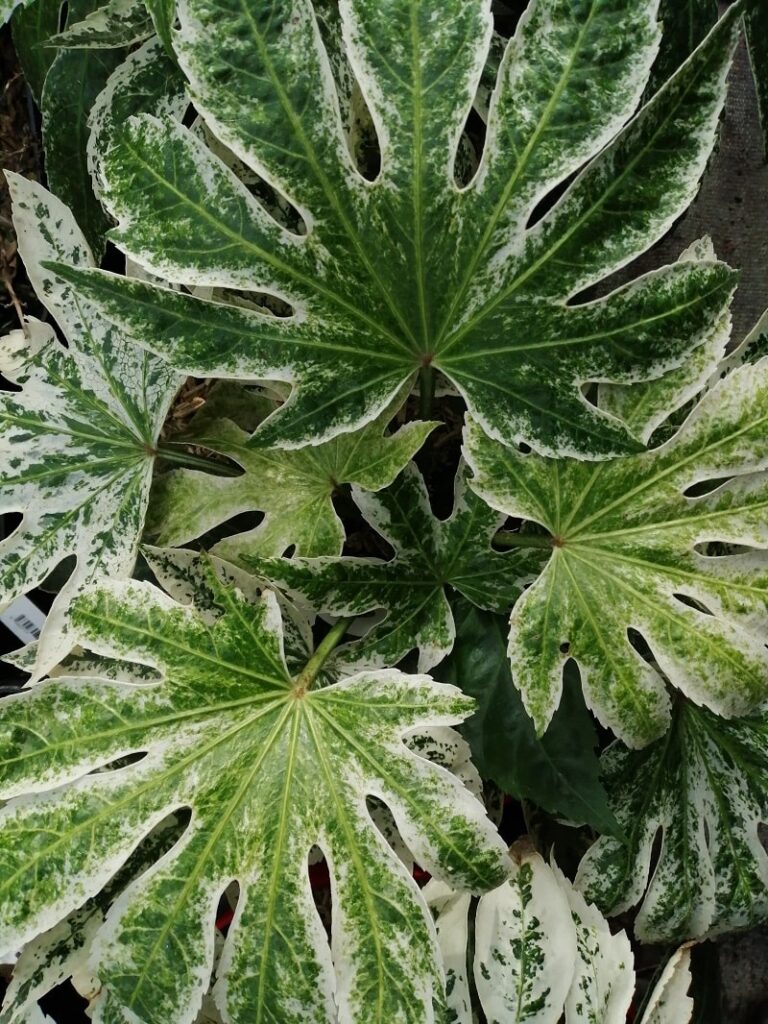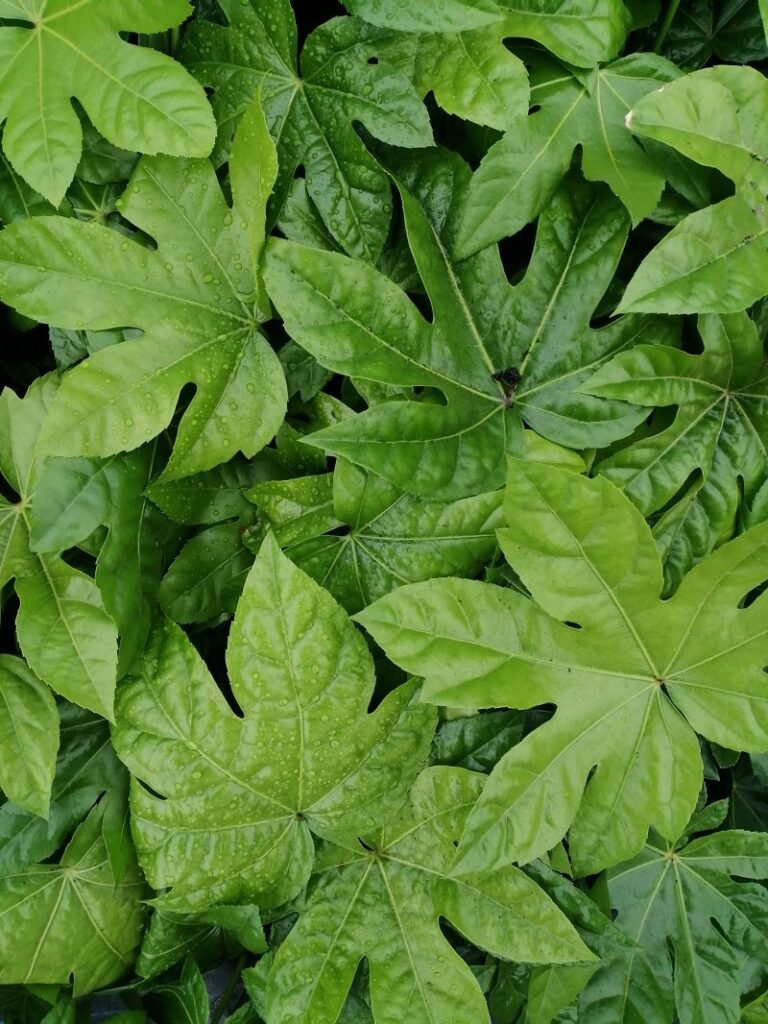I bought my first Japanese aralia (fatsia japonica) a couple of months ago, and it was looking incredible on my balcony. But after a few weeks, the leaves started to turn brown.
It was through expensive trial and errors to save my beautiful dream plant from dying. There is no need to raise concerns since these issues are fixable.
I decided to share this article on the causes of Japanese aralia leaves turning brown and the care regime to consider. But it would be to best start by answering the question at hand.
So, why are my aralia leaves turning brown? Direct sunlight exposure happens to be the leading cause since aralia grows under the canopy in its native habitat. Other possible causes are inappropriate watering, water quality, low humidity, and more.
Today, I’m going to walk you through some of the possible ways of troubleshooting these problems and preventing them from occurring in the first place.
You May Also Like: Why Are My Aralia Leaves Turning Yellow?

Causes of Aralia Plant Leaves Turning Brown (with Solutions)
Fatsia japonica leaf problems are inevitable when growing both indoors and outdoors. Every plant owner needs to exercise the ultimate aralia plant care regime.
Fixing Japanese aralia leaves turning brown is a no-brainer task. You only need to identify the cause for easy correction and restoring the normal plant foliages.
Below are some of the possible causes of aralia plant leaves turning brown with their respective solutions:
Prolong Direct Sunlight Exposure
Aralia species thrive under the canopy in their native habitat. It implies that the plant prefers bright indirect sunlight to carry out its physiological processes.
Aralia leaves turning brown is due to direct sunlight exposure for an extended period. The high-intensity rays from the sun end up scorching your houseplant foliages.
If this condition persists for a couple of weeks or months, the plant will begin to wilt and die in the long run. The best option is to provide the optimum light requirement.
Moving the houseplant away from direct sunlight is a perfect choice. But be sure to place it at a point it receives filtered light.
You may also opt to install artificial lights in the room to safeguard the plant from sunburns. The good news is that aralia plants can tolerate low-medium lighting conditions.
Inconsistent Watering Habits
Under-watering is another hidden cause why your aralia plant is exhibiting brown and crispy leaves. The issue is normal among plant owners with super busy schedules.
Aralia plant loves moderate water requirements. But this depends on whether it is a growing season or dormancy stage. Keep in mind that most houseplants need more water in summer.
If you notice your aralia leaf tips and edges turning brown, it is due to inconsistent watering habits. You’ll need to water the houseplant to save the leaves from turning brown.
Be sure to use well-drained potting soil and a container with drainage holes at the bottom. It will help to prevent overwatering issues from happening.
Over-Fertilization Problem
Brown leaf tips and edges are initial indicators of excessive buildup of salt from fertilizer. Most aralia varieties are not heavy feeders like other tropical plants.
But these houseplants still need a little fertilizer to enhance better growth and health. Too much fertilizer application is harmful to the plant.
Excessive salt accumulation in the potting mix inhibits the roots from facilitating essential functions like water and mineral absorption.
The dehydration makes aralia plant leaves start turning brown on the tips and edges. Flushing out the potting soil with adequate water will make the situation worse.
The best alternative is to re-pot the houseplant to fresh potting soil. Provide the necessary condition and care to restore the stunning aralia foliages.
Water Quality Requirements
Tap water contains several minerals and chemical compounds. These ingredients are harmful to plant health and well-being (Source: Oregon State University).
Sodium and chloride compounds happen to be the possible cause of aralia leaves turning brown after watering. These chemical compounds are toxic to the plant and should be avoided.
Consider using distilled or filtered water when watering these indoor plants. Another best option is rainwater. Improving the water quality for your plant will save leaves from turning brown.
Overwatering Problems
Overwatering is the leading cause of aralia leaves turning brown. It occurs due to improper soil drainage that hinders root aeration.
Damp condition and lack of soil aeration encourage the growth of bacteria and fungi. Root rot occurs due to fungal growth.
The disease usually damages the root systems. The houseplant ends up not getting enough water to facilitate its physiological activities.
If the condition persists, the aralia plant will respond by displaying brown leaves. Fixing the overwatering issue can be tricky for novice plant owners.
The best option is to re-pot the plant. The first thing to consider is to snip off the affected roots with a sterilized pair of scissors. Use fresh potting mix and container.
Develop a strict watering schedule to prevent overwatering from happening again. Water the houseplant twice or thrice during the growing seasons.
Root-bound Issues
Most aralia varieties are fast-growing houseplants. The condition makes these tropical plants more vulnerable to root-bound issues.
Watering a houseplant suffering from a root-bound problem can be challenging. The plant ends up not getting sufficient water to support its growth and development of beautiful leaves.
Brown tips and edges are the signs of root-bound stress. But re-potting the indoor plant more often in a year will be the best solution.
Be sure to use a larger pot than the previous one to provide adequate space for the roots to breathe and perform their functions more effectively.
Lack of Humidity
Aralia plants are native to the tropical rainforest of Asia and the Americas. These tropical plants thrive under high humidity.
Most indoor aralia plants are vulnerable to brown leaf tips and edges due to humidity fluctuations. Little moisture in the air is responsible for the fatsia japonica leaf problems.
If you’re wondering why your Japanese aralia leaves are brown, it could be due to the low humidity around the plant.
The best solution is to install an electric humidifier in the house to help increase the humidity level. Avoid misting the houseplant to prevent other fatsia japonica leaf problems from occurring.
Frequently Asked Questions (FAQs)
Why Is My Japanese Aralia Dying?
The most established causes are overwatering, extreme temperatures, fungal diseases, and over-fertilization. You need to fix these issues on time to save the aralia plant from dying.
Why Are the Leaves on My Fatsia Turning Brown?
The leading causes are direct sunlight exposure and excessive buildup of salt around the roots from fertilization. Other causes are low humidity and improper watering routine.
Why Are My Fatsia Japonica Leaves Turning Yellow?
Nutritional deficiency and insect infestations are the common cause of fatsia japonica leave turning yellow. Other possible causes are low lighting conditions and improper watering regime.
Why Are My Japanese Aralia Leaves Turning Black?
Japanese aralia leaves turning black is due to root rot. Re-potting the houseplant to a fresh potting mix and cutting off the affected roots will help resolve the issue.

In Conclusion
Aralia plant leaves turning brown is due to direct sunlight exposure, low humidity, under-watering, overwatering, over-fertilization, and extreme temperatures.
The rule of thumb is to investigate the plant and identify the reason behind the leaves turning brown. Knowing the exact cause will help consider the necessary measures and combat the issue.
But if the condition persists for a couple of weeks, the aralia plant is likely to wilt and eventually die. Be sure to keep an eye on your houseplant to resolve any leaf problem on time.
